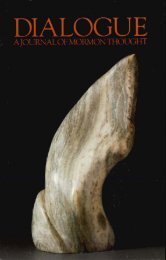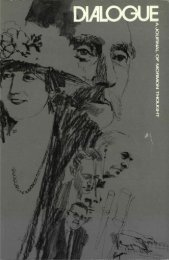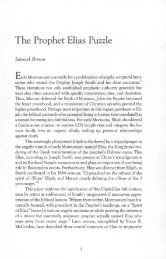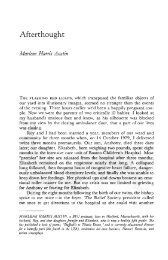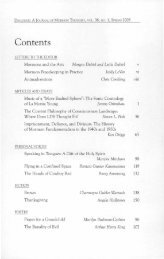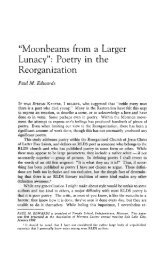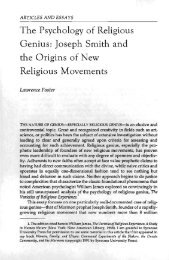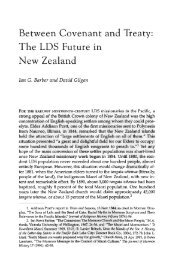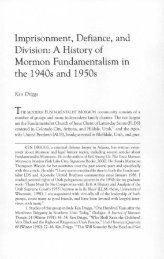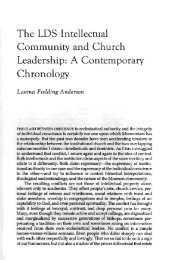Dialogue, Volume 25, Number 2 - Dialogue – A Journal of Mormon ...
Dialogue, Volume 25, Number 2 - Dialogue – A Journal of Mormon ...
Dialogue, Volume 25, Number 2 - Dialogue – A Journal of Mormon ...
You also want an ePaper? Increase the reach of your titles
YUMPU automatically turns print PDFs into web optimized ePapers that Google loves.
138 DIALOGUE: A JOURNAL OF MORMON THOUGHT<br />
class, I frequently express my opinion — sometimes any opinion—just<br />
so the voices in the class are not exclusively male. The women in my<br />
ward <strong>of</strong>fer bright, intelligent comments in Relief Society but rarely<br />
speak out in Sunday School. Perhaps they are intimidated by the<br />
quick, sure answers <strong>of</strong> the men. But I worked with men like these<br />
when they were just nineteen. Call me a sister missionary who lived to<br />
tell the tale.<br />
Missionary life began for me, as it does for most missionaries today,<br />
in the Missionary Training Center (M.T.C.) in Provo, Utah. It was a<br />
grueling two-month ordeal, even longer than basic training but serving<br />
much the same purpose, I'm sure. It was there I learned something<br />
<strong>of</strong> mission organization. First was the companionship: we were<br />
never, Never, NEVER to leave our companions. Then came the district,<br />
made up, in the M.T.C, <strong>of</strong> four companionships. In our district,<br />
we had three elder companionships and one sister companionship.<br />
A zone <strong>of</strong> maybe five to ten districts came next, and finally the<br />
mission.<br />
In a companionship, one missionary was designated "senior." In<br />
the M.T.C, seniors were chosen by alphabetical order the first week,<br />
and then changed each week. My companion and I never worried<br />
much about the title. In the mission field, however, the senior companion<br />
was usually the one who had been there the longest and,, therefore,<br />
theoretically had the most experience and wisdom as well as more<br />
responsibilities such as filling out reports and planning schedules. It<br />
was an honor to be called as a "trainer," which meant that a missionary<br />
was deemed worthy, kind, and knowledgeable enough to train new<br />
missionaries, or "greenies" as they were sometimes irreverently called.<br />
Each district also had a leader. These leaders were responsible to<br />
and for the missionaries in their particular district. Usually, as was<br />
our experience in the M.T.C, a companionship <strong>of</strong> sisters served in a<br />
district with companionships <strong>of</strong> elders. The district leader, an important<br />
position, would be one <strong>of</strong> the elders.<br />
Even more prestigious was the position <strong>of</strong> zone leader. Two zone<br />
leaders worked as companions. Unlike most missionaries, they had a<br />
car. They were the trouble-shooters for the missionaries, helping<br />
with problems or finding help. They informed missionaries about<br />
transfers, picked up new sisters and elders, organized and conducted<br />
zone meetings, and were liaisons between the missionaries and the<br />
mission president.<br />
Assistant to the president (A.P.) was the highest position to which<br />
elders could aspire (although, <strong>of</strong> course, as with any other Church<br />
calling, they weren't supposed to). Generally only the very finest, most<br />
dedicated, and diligent missionaries became A.P.s. They helped the




